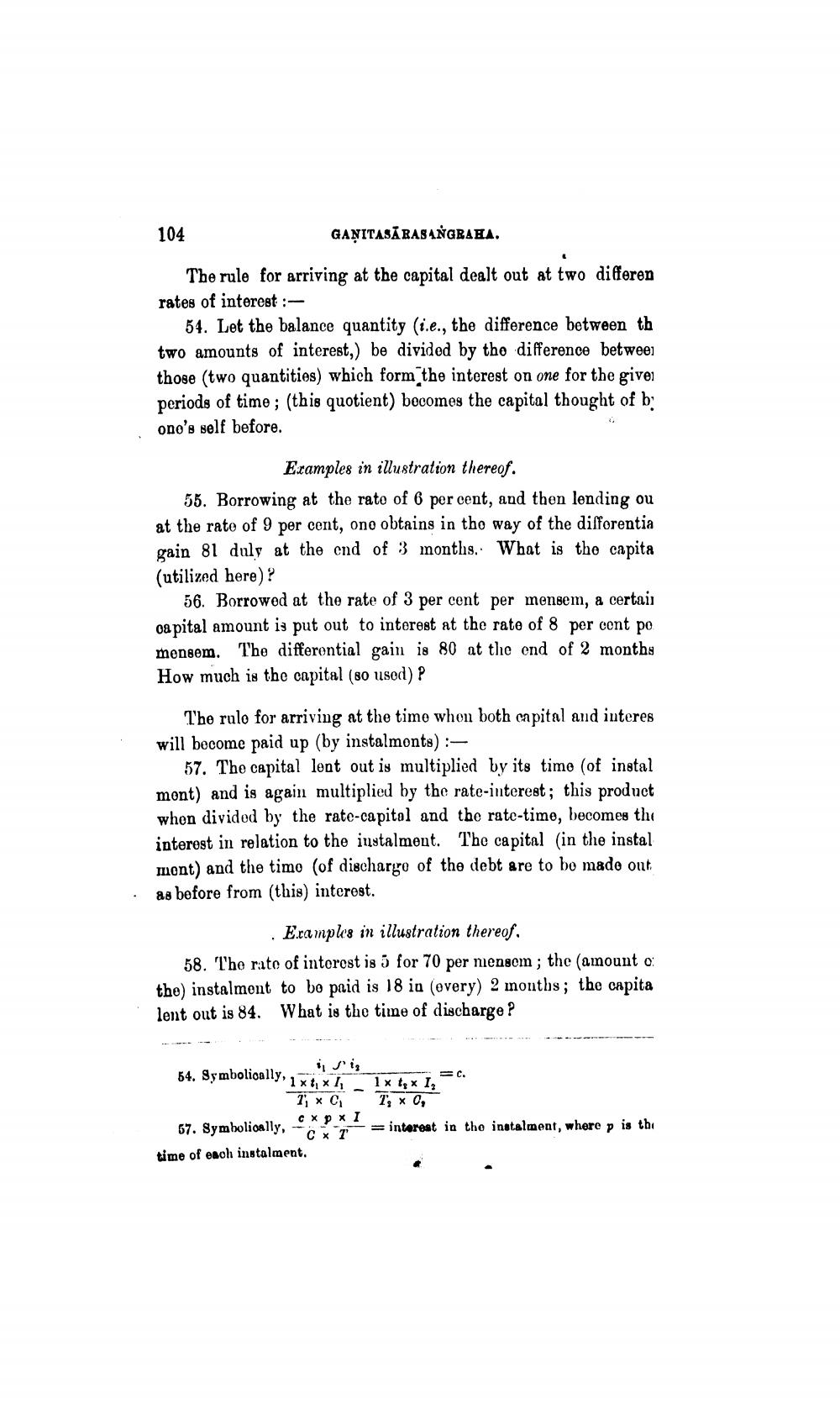________________
104
GAŅITASĀRASANGRAHA.
The rule for arriving at the capital dealt out at two differen rates of interest :
54. Let the balance quantity (i.e., the difference between th two amounts of interest,) be divided by the difference between those (two quantities) which form the interest on one for the giver periods of time; (this quotient) becomes the capital thought of b ono's self before.
Examples in illustration thereof. 55. Borrowing at the rate of 6 per cent, and then lending ou at the rate of 9 per cont, ono obtains in the way of the difforentia gain 81 duly at the end of 3 months.. What is the capita (utilized here)?
56. Borrowed at the rate of 3 per cent per mensem, a certain oa pital amount is put out to interest at the rate of 8 per cent po mensom. The differential gain is 80 at the end of 2 months How much is the capital (80 usod) ?
The rulo for arriving at the time whon both capital and interes will become paid up (by instalmonts) :
57. The capital lent out is multiplied by its time (of instal mont) and is again multiplied by the rate-interest; this product when divided by the rate-capital and the rate-time, becomes the interest in relation to the instalment. The capital in the instal
mont) and the timo (of discharge of the debt are to bo made out • as before from (this) interest.
Eramplis in illustration thereof, 58. The rate of interest is 5 for 70 per nensem; the amount o: the) instalment to be paid is 18 in (every) 2 months; the capita lent out is 84. What is the time of discharge ?
C.
54. Symbolically,
"1x, xl,
1; * C
схрх I 67. Symbolically,
сх т time of each instalment.
1x tex I
7, RC, = interest in the instalment, where p is the




